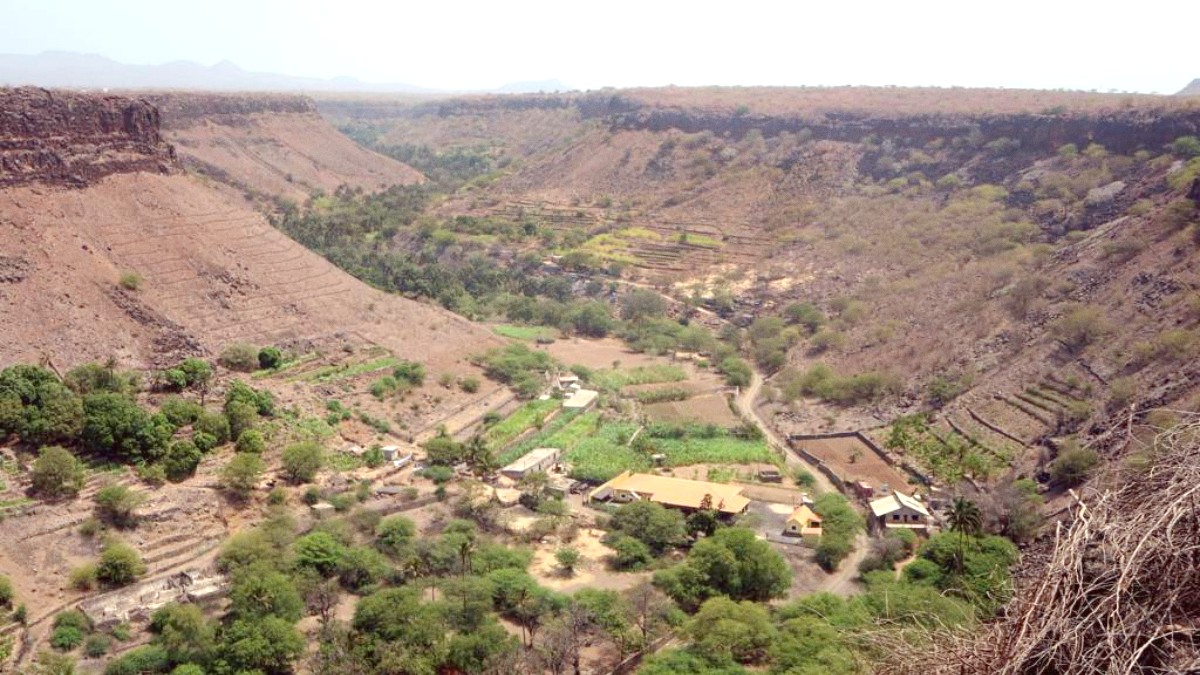
Cabo Verde
Sal's climate is characterized by warmth and dryness. Daily average temperatures consistently range from 24°C (75°F) to 29°C (84°F). Nighttime temperatures seldom fall below 20°C (68°F). Sal receives very little precipitation; most rainfall occurs sporadically between August and October. Even then, rain showers are generally brief and light, quickly followed by sunshine. Humidity levels stay relatively low, which prevents the warm temperatures from feeling overly heavy.
A defining trait of Sal's climate is its constant trade winds. These winds persist year-round, establishing the island as a recognized location for wind and kite sports. The windiest months typically span from November to June, conditions for these activities. Outside of these months, winds are still present but may be less strong, offering calmer conditions for swimming and snorkeling. The consistent breeze also mitigates the heat.
Sal has very low precipitation; direct hurricane strikes are extremely uncommon due to the islands' easterly location. Tropical storms or depressions might bring heavier rain and strong winds between June and November, but these are infrequent.
Wind/Kite Surfing: November to June has consistent and strong winds. Scuba Diving/Snorkeling: Water visibility can be better outside peak wind season (Jul-Oct). Water temperatures are warmest from July to October. Beach relaxation: Enjoyable year-round. July to September has the warmest sea. Turtle Nesting/Hatching (Loggerhead): Nesting from July to September. Hatching from September to November. Book tours through authorized conservation projects for responsible viewing. Island Exploration (car/quad bike): Year-round suitability, though hotter months (Jul-Sep) need more hydration and Sun protection.
Infrequent tropical storm potential.
Sal's easterly position in the Atlantic hurricane belt means direct hurricane impacts are very rare. Occasional tropical depressions may bring brief heavy weather.
From December to March, fine sand particles from the Sahara Desert can cause hazy conditions. This may reduce visibility.
Optimal wind conditions.
November through June typically brings the most consistent and strong winds, perfect for these activities.
July to October generally has less intense winds, making the sea calmer for swimming and snorkeling. This is also when sea temperatures are highest.
Specific seasons for nature viewing.
Loggerhead sea turtle nesting generally runs from July to September. Hatching occurs from September to November. Responsible tour selection is advised.
November to May, being the high season, will have more visitors and higher costs for accommodation and flights.
Cabo Verde has distinct entry protocols based on nationality and length of stay. Many countries, including most EU nations, the UK, USA, Canada, and Brazil, are visa-exempt for stays up to 30 days. Travelers from these countries pre-register on the EASE platform at least 5 days prior. The Airport Security Tax (TSA) typically completes payment during this online pre-registration. IVisa and VisaHQ offer consumer visa services.
For all other nationalities, or stays beyond 30 days, a visa from a Cabo Verdean embassy or consulate in your home country is necessary. Requirements vary but commonly include a completed form, valid passport, recent photos, and proof of onward travel or accommodation. Advance contact with the diplomatic mission is advisable to verify specific requirements and processing times.
Valid for at least six months beyond your stay.
Passport-sized photographs for visa applications or digital copies for EASE.
Confirmed return or onward ticket may be requested.
Hotel reservations or address of stay may be requested.
Print or digital copy for visa-exempt travelers.
Cabo Verde presents options for various travel budgets, from economical to luxury experiences.
The official currency is the Cabo Verdean Escudo (CVE), directly pegged to the Euro at 1 EUR = 110.265 CVE. Euros are widely accepted in tourist areas of Sal, but change will often return in CVE. For transactions outside the main tourist strip or in smaller local establishments, CVE is advisable.
These daily average costs are based on early 2024 data and can fluctuate based on individual spending habits and seasonality.
Sal generally counts as safe for tourists. Petty crime can occur. Keep valuables out of sight, carry only necessary items, and be aware of your surroundings, especially near ATMs or at night. Avoid displaying expensive jewelry or electronics. Serious violent crime against tourists is rare.